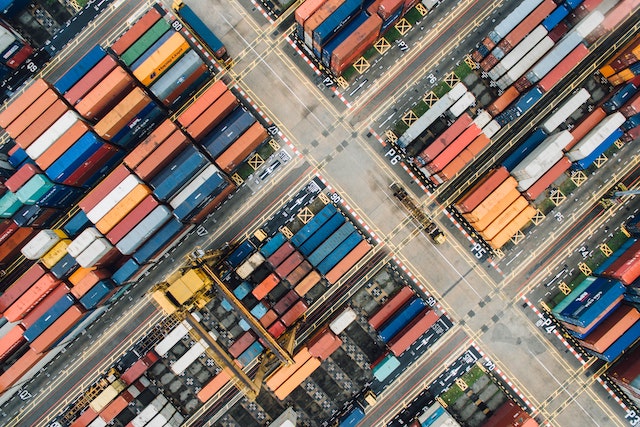Omnichannel ecommerce and supply chain innovation.
eCommerce has grown rapidly worldwide. In fact, from 2014 to 2020, it has seen a massive 220% growth rate. To date, this market is worth over $4.2 trillion and climbing. By 2024, the global ecommerce market is estimated to reach $6.4 billion (Statista). COVID-19 has further increased this trend as many consumers have found a strong preference for ordering from the comfort of their homes.
eCommerce companies must navigate a myriad of areas to succeed. This includes customer experience, social media, payment method integration, and supply chain management. The importance of supply chain management is shown by the recent Ever Given accident, which is expected to impact supply chains for months (Stevens). Many are finding omnichannel ecommerce as a fruitful solution, but the impact of omnichannel ecommerce on supply chains is often far greater than anticipated and requires effective solutions to be implemented throughout the supply chain.
- The Impact of Omnichannel eCommerce on Supply Chains
- What is an Omnichannel Strategy?
- eCommerce Growth is Revealing Supply Chain Inefficiencies: Omnichannel Provides a Solution
- Companies Considering an Omnichannel Model Should Consider the Following
- What’s Next? How Omnichannel Strategy is Changing the Present and Future of eCommerce
- Learn How Rapyd Fintech as a Service Powers Your Omnichannel Strategy
The Impact of Omnichannel eCommerce on Supply Chains
What is an Omnichannel Strategy?
There are two major strategies for modern ecommerce: omnichannel and multichannel. To understand omnichannel, it is important to first understand multichannel. Multichannel ecommerce puts the product at the center of the experience. A consumer can opt for many different ways to make their purchase: on a website, on marketplaces like Amazon, on social media, and other methods.
Meanwhile, Omnichannel strategies put the customer in the center of the model. Different channels have similar messaging and communicate with one another to provide a high level of personalization. Channels update one another on a customer’s most recent actions with the company. (Omnisend) This gives customers a more seamless experience. In other words, with multichannel marketing, channels operate separately from one another. With omnichannel marketing, they are integrated.
eCommerce Growth is Revealing Supply Chain Inefficiencies: Omnichannel Provides a Solution
eCommerce data has consistently shown that the optimal customer experience is frequently disrupted by inefficiencies within supply chains. (Modern Materials Handling) As more merchants switch to omnichannel ecommerce, it highlights the need for effective supply chain solutions that adjust to this model.
The reality is that accelerating growth in the ecommerce sector will continue to put strains on supply chains for organizations that do not effectively transform how they structure their business. The increasing growth of ecommerce and consumer trends that favor ordering online further creates a situation where omnichannel supply chain solutions are a necessity. Companies that shift to an omnichannel strategy need to engage in careful planning.
Companies Considering an Omnichannel Model Should Consider the Following
1. Processing Customer Orders: Omnichannel strategies require a successful material handling fulfillment strategy that is able to treat inventory as available across all channels. Traditional supply chains move goods from the factory to the end customer. Often, these items are stored in full pallets, meaning the only place where all products are in stock is the store level. Shipping directly from warehouse to customer requires implementing new processes to efficiently pull and ship orders.
2. Expanding the Portfolio for Better Customer Engagement: With customer expectations higher than ever, many organizations have greatly expanded their product offerings. Offering the right variety of products for your customers simply cannot be overlooked. This requires coordinating increasing complexities of supply chains, which can require more attention to detail and careful planning to pull off successfully. Successful companies in this area broaden the portfolio of stock-keeping units and reduce the number of delivery lines shipped per delivery.
3. Delivery from Store or Distribution Center: One of the most important impacts of operationalizing an omnichannel strategy is the need to be able to deliver from stores or distribution centers. While distribution centers often provide more timely shipping, products may be divided across multiple warehouses, meaning that shipping from store to customer may be more efficient in some situations. This is an important strategy that provides great flexibility in an organization’s ability to quickly meet customer needs. Having an infrastructure in place that allows shipping from multiple points is critical, but this also requires greater supply chain oversight.
4. Impacts on Warehouses and IT: Omnichannel strategies require the seamless integration of different channels, which can require additional investment in IT resources. Planning in consultation with IT staff is important for a successful transition. Warehouse logistics must also be dealt with ahead of the switch to ensure there are no gaps in fulfillment. This is particularly important for prepping warehouses to handle web-based orders.
5. Meet the New Challenge with a Multi-Step Picking Process: More organizations are finding that a multi-step picking process is integral for converting their supply chain to work with an omnichannel strategy in B2B and B2C. Given the fact that B2C orders are often smaller and more numerous, this process allows for the sorting of up to 26,000 items per hour for over 6,000 orders. This increases efficiency and provides a process that ensures that organizations are able to minimize the effects of supply chain disruptions.
What’s Next? How Omnichannel Strategy is Changing the Present and Future of eCommerce
Omnichannel strategy is an effective way for ecommerce companies to excel in the rapidly growing modern marketplace. It also requires a shift in how ecommerce is conducted.
There are many benefits of an omnichannel strategy including improved customer retention, revenue growth, and better customer insight. It also requires extensive commitments to optimizing the supply chain and addressing potential problems given the impact of omnichannel ecommerce on supply chains (Maropost).
Although supply chain management is an integral component, it is only one element of a successful omnichannel strategy. Understanding Omnichannel’s impact on payments and implementing a payment solution that works across countries and platforms is essential to your success.
Learn How Rapyd Fintech as a Service Powers Your Omnichannel Strategy
Sources:
Clevertap. Multichannel vs. Omnichannel Marketing: What Mobile Marketers Need to Know
https://clevertap.com/blog/multichannel-vs-omnichannel-marketing/
Coredna. Multi-Channel Marketing Vs Omnichannel Marketing Explained In Five Minutes
https://www.coredna.com/blogs/multi-channel-vs-omnichannel-marketing
Maropost. Five benefits of omnichannel marketing for SMBs. https://www.maropost.com/5-benefits-of-omni-channel-marketing-for-smbs/
Modern Materials Handling. E-commerce study reveals disconnect between customer experience and supply chain teams. https://www.mmh.com/article/e_commerce_study_reveals_disconnect_between_customer_experience_and_supply
Omnisend. Omnichannel vs. multichannel: How to know the difference. https://www.omnisend.com/blog/omnichannel-vs-multichannel/
Statista. Retail e-commerce sales worldwide from 2014 to 2024. https://www.statista.com/statistics/379046/worldwide-retail-e-commerce-sales/
Stevens, Pippa. The ship that blocked the Suez Canal may be free, but experts warn the supply chain impact could last months. CNBC. https://www.cnbc.com/2021/03/29/suez-canal-is-moving-but-the-supply-chain-impact-could-last-months.html
Itelligencegroup.The Impact of Omni-Channel Commerce on Supply Chains.
https://itelligencegroup.com/wp-content/usermedia/WhitePaper-ImpactOfOmnichannel.pdf
Header image by CHUTTERSNAP on Unsplash
Subscribe Via Email
Thank You!
You’ve Been Subscribed.



